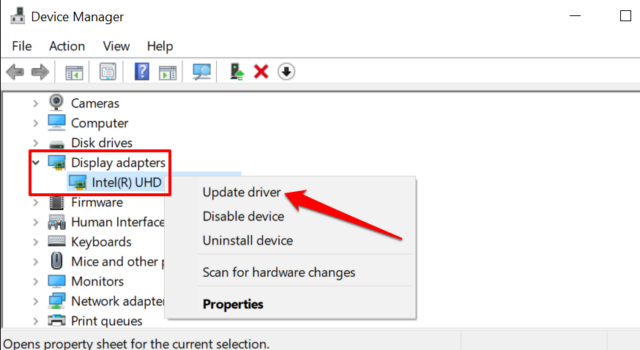

- NO DISPLAYPORT SIGNAL FROM YOUR DEVICE DRIVERS
- NO DISPLAYPORT SIGNAL FROM YOUR DEVICE UPDATE
- NO DISPLAYPORT SIGNAL FROM YOUR DEVICE WINDOWS 10
- NO DISPLAYPORT SIGNAL FROM YOUR DEVICE PC
- NO DISPLAYPORT SIGNAL FROM YOUR DEVICE WINDOWS
NO DISPLAYPORT SIGNAL FROM YOUR DEVICE WINDOWS
Press the Windows Key + X on your keyboard.
NO DISPLAYPORT SIGNAL FROM YOUR DEVICE UPDATE
To update your graphics card drivers, follow these steps:
NO DISPLAYPORT SIGNAL FROM YOUR DEVICE DRIVERS
If your graphics card drivers are outdated, it can cause issues with your DisplayPort. If you are using an adapter or converter, ensure that it is compatible with your monitor and PC. Try unplugging and reconnecting the cables to ensure a proper connection. Make sure that your DisplayPort cables are correctly connected and not damaged. The first thing you should do is check your cables and connections. Now that we know the possible causes let's explore some solutions. Windows Update: Sometimes a Windows update can cause issues with your graphics card or monitor settings, resulting in the no signal error. Try connecting to another monitor or device to see if the issue persists. Monitor Issue: Your monitor may not be working correctly or may be incompatible with the DisplayPort. Try updating your graphics card drivers or checking if the graphics card is working correctly. Graphics Card Issue: If your graphics card is not functioning correctly, it can cause the no signal error. Ensure that your cables are properly connected and are not damaged.

Loose or Damaged Cables: A loose or damaged DisplayPort cable can cause the no signal error. It provides high-quality audio and video signals and supports high-resolution displays with refresh rates up to 240Hz.īefore we dive into the solutions, let's first discuss the possible causes of this error:
NO DISPLAYPORT SIGNAL FROM YOUR DEVICE PC
In this blog post, we will explore the possible causes of this error and provide you with some solutions to fix it.ĭisplayPort is a digital display interface that connects your PC to a monitor or other display devices such as TVs, projectors, and gaming monitors. And as DP 1.2 can support up to 4k 60Hz I'm hopeful I could get the monitor running with 3440x1440 60Hz if I was able to procure a signal from that.If you are experiencing a "No DisplayPort Signal" error on your Windows PC, don't worry, it's a common issue that can be easily fixed. Is video over a type c to type c cable not a thing at all? Should I instead spring for a type c to HDMI 2.0 adapter? The monitor only has one DP connection, and I'd rather keep that for my desktop PC.ĮDIT: To clarify, the laptop uses the integrated Intel HD 620 for external monitor connections, and according to this page it supports HDMI 1.4 (which presumably is the HDMI connection) and DisplayPort 1.2, which probably would be via that USB-C port. I tried googling for a video capable usb-c cable though and the only ones I could come up with were some that have long since gone out of stock. It's probably this one, although mine's shorter: The cable is some generic one, so I think it's impossible to tell whether it supports video or not. I did try manually selecting the USB-C as the input, but there was no signal detected. Apparently the USB-C port only functions when the machine is being charged for some weird reason. Problem solved, thanks for the help!ĮDIT3: Oops, the solution wasn't the BIOS update after all, but instead the fact that I plugged the laptop into the AC adapter for the update. A BIOS flash to the latest version and the connection works perfectly. Also HDMI from laptop works, but the highest resolution I can get that way is 2560 x 1080, so I'd rather use the USB-C option to try and obtain the native 3440 x 1440 resolution.Īm I missing something here? Are there some settings I would need to fiddle with? I've scoured the internet for hours and haven't come up with anything useful, so any tips would be appreciated.ĮDIT2: The drivers sure were up-to-date, but apparently the BIOS wasn't. DP to DP connection from desktop to display works perfectly.
NO DISPLAYPORT SIGNAL FROM YOUR DEVICE WINDOWS 10
Running Windows 10 on both desktop and laptop with the latest updates. However trying the same with the type C to type C cable did NOT work. This also worked when I tried the same with my laptop. The port on the display also works as I was able to connect a USB-A to USB-C cable from my desktop and access a storage device plugged into one of the USB downstream ports. The cable and port on laptop work as I was able to use the cable to connect my tablet to the laptop without problems.

However, when I try to connect the monitor with the USB-C cable that came bundled in the box, neither the monitor or the laptop recognise a connection happening. The laptop I'm trying to connect is an Asus UX533FD: Īccording to the specs the USB-C port should support a display signal, and there's a displayport logo printed next to the port on the device. I recently bought a new monitor, the BenQ EX3501R: Īccording to the specs it should support a display signal over USB-C (DP Alt), and the USB port is indeed found as a listed input in the display menu.


 0 kommentar(er)
0 kommentar(er)
